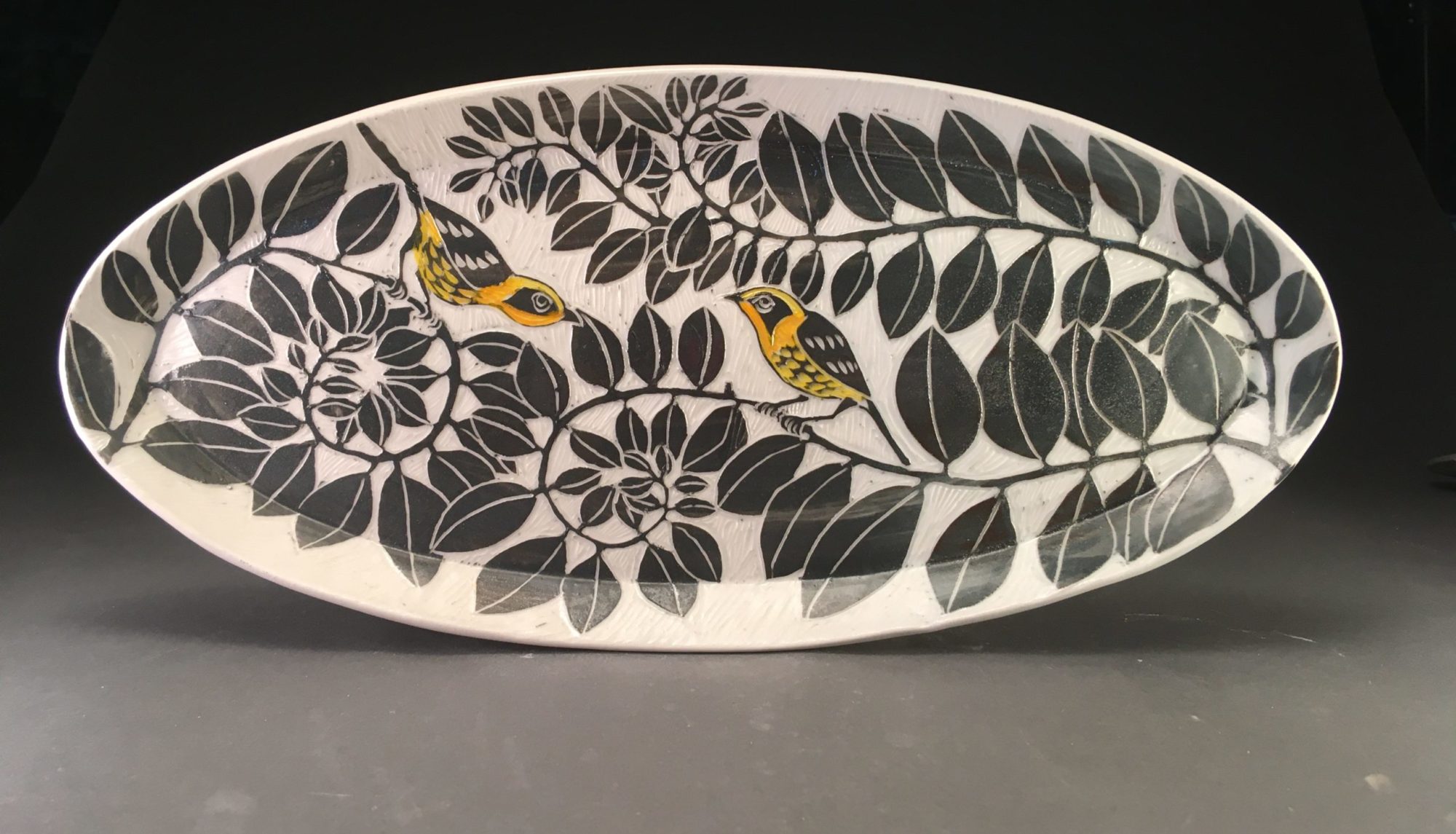Yes, yes I got behind! But at the end there is a bonus of a workshop I did of inlaid slip into Terra Cotta Pavers
Handbuilding Week 5
Darting vessels and adding clay into cuts
Okay so I’m really hooked on the brayer as a method of sealing the clay onto itself. Darting is where you cut a slit or a leaf shape or a triangle out of the piece and close up the gap to change the shape of your pot.
Darted Tall Pitcher
I made a base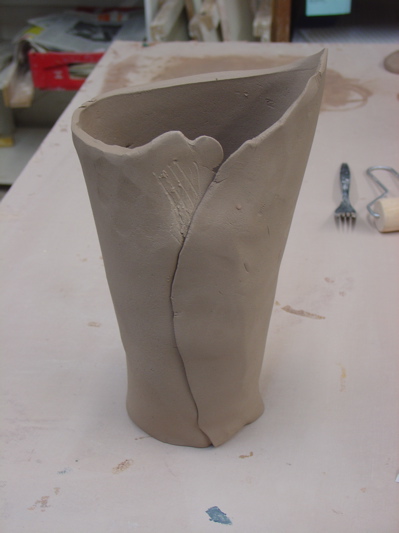
and darted it at the bottom. Where I wanted it wider, I slit it, spread it apart and added a triangle of clay. any time I attached clay to clay, I thinned it so the walls would basically be the same thickness all round.
Here it is, awaiting a triangle of clay to be added.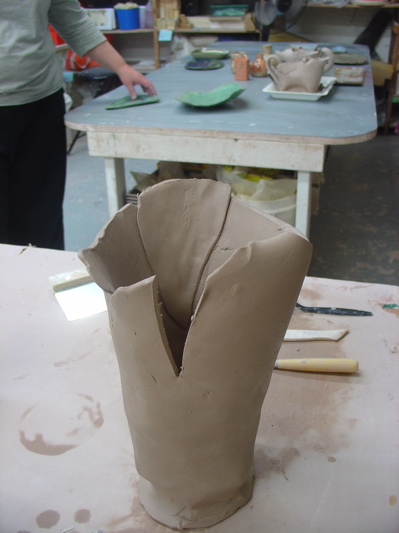
In retrospect, I wouldn’t have darted it down there. I think it made it a lot weaker. Where I wanted it narrower, I cut slits and folded them overlapping. After I got the base attached, I darted in the top part and then added several more tiers. You can see on the right where I’ve made a slice and will thin that and then fold it in to overlap and make the opening narrower.
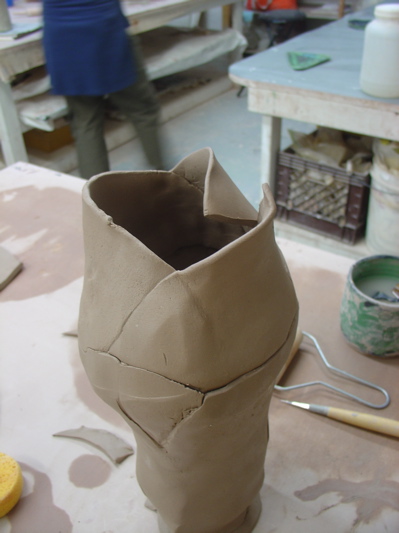
I just kept adding wide strips of slightly hardened slabs and finally added a handle. The piece turned out quite tall.
Then I scored and wet it a bit. To press it together, I used a brayer which gave me a great surface quality.
I supported on the inside and went over the area-to-be-joined with a brayer; pressing it down and bonding it together.
I also used the brayer at a slight angle on either side of the handle.
and Voila! a huge piece!
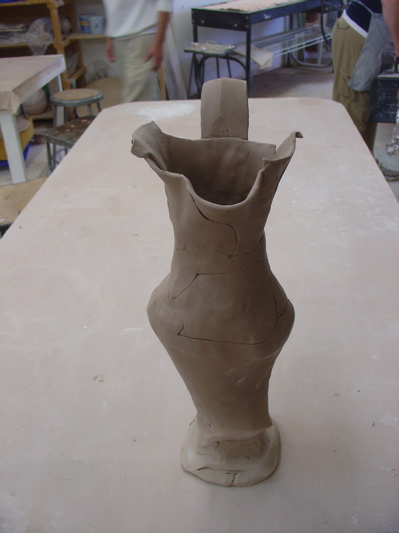
Darted Bowl
This is a great and simple project. I took a circle and made 4 cuts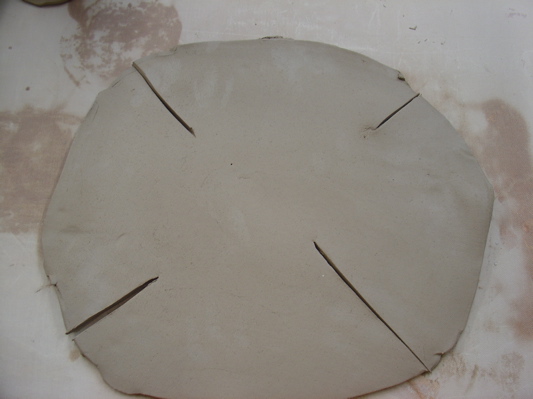
I brayer-ed the edges to make them thinner so they are less likely to have the strength to warp away from the joint and also to have a consistent thinness throughout the bowl.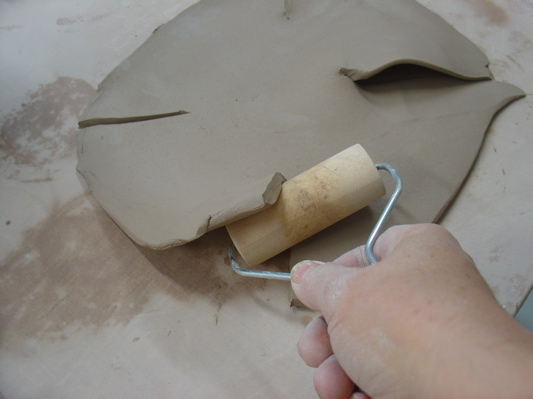
Then I fold them up and overlapped them.
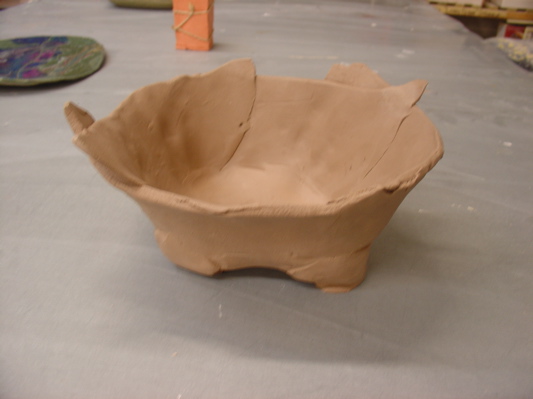
Added matching feet and there I have a nice serving bowl. The white mark is the slip that I put my signature on.
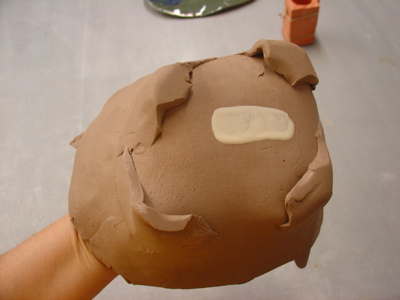
HANDBUILDING WEEK 6
Faceting, slip transfer, sgraffitto
Faceting a vertical vessel
So, you can get springs in all shapes and sizes from, say, the back of a spiral notebook to the inside of a ball-point pen. It’s a good idea to stretch these out a bit as too tight a coil has too high a profile so the clay gets caught in the narrow spaces between the coils in stead of cutting cleanly through. above is (from bottom to top) a spring that has not been stretched at all, a regular wire (you can also use a cheese cutter )for flat cuts and that same type spring all stretched out and ready to use.
above is (from bottom to top) a spring that has not been stretched at all, a regular wire (you can also use a cheese cutter )for flat cuts and that same type spring all stretched out and ready to use.
Start by making a very basic vessel. I just shoved the end of this dowel rolling pin into a rectangle- it could be a round shape.
After I opened it a bit,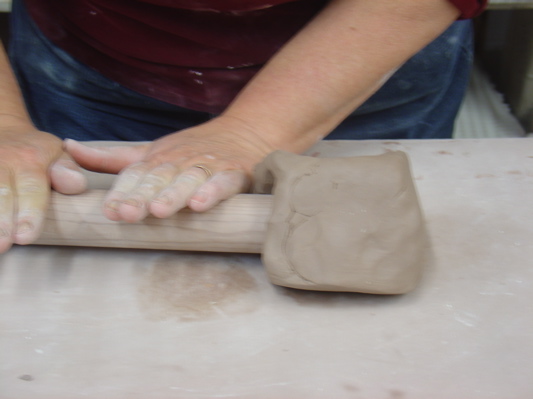
I took the stretched out fine spring that someone got at a resource center and cut in various ways down the thick walls.
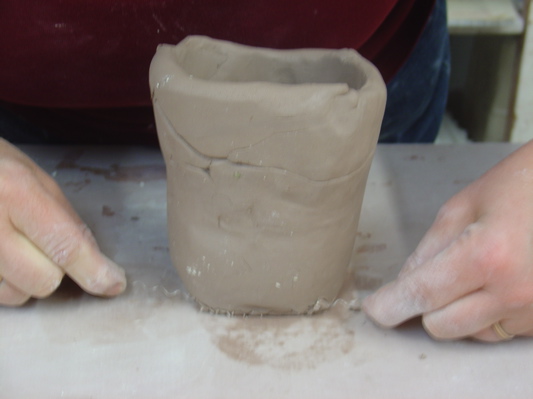 At one point I cut all the way through but I just reattached that and re-cut it shallower.
At one point I cut all the way through but I just reattached that and re-cut it shallower.
You can change directions with the wire or let one end curve ‘round to make a dynamic pattern.
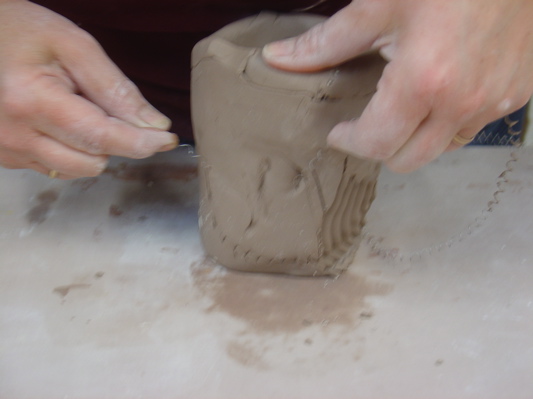

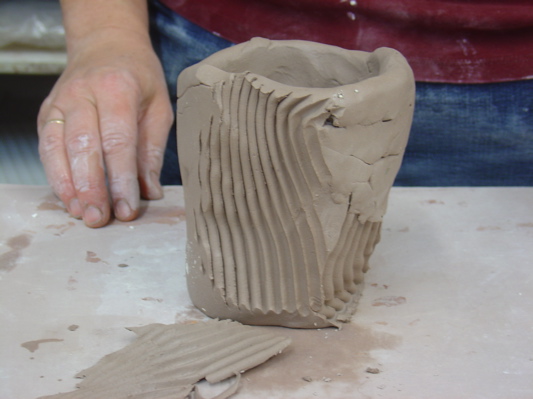
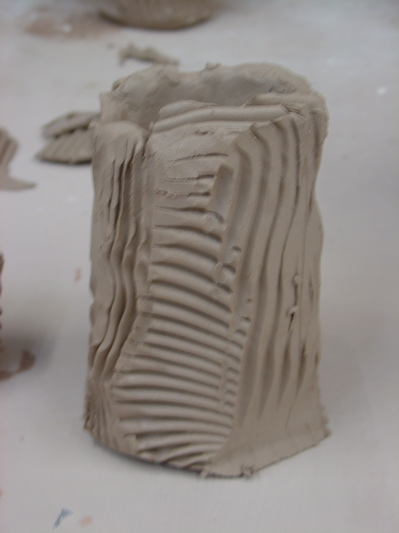
I also made little glaze test pots out of the pieces I sliced off.
Mary Ellen had a really good time with the wire.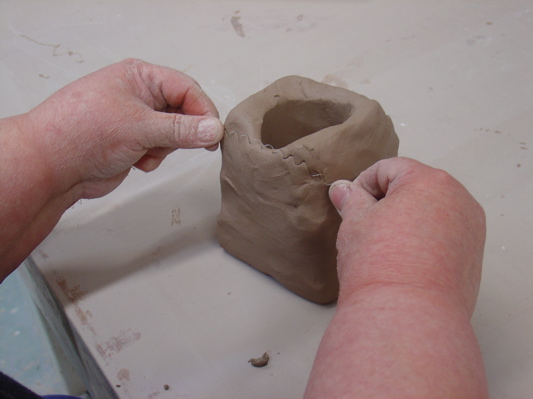
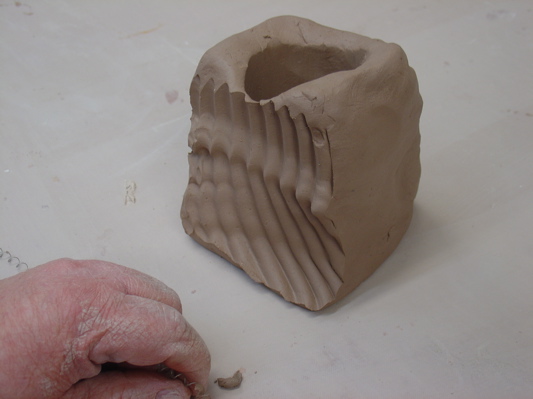
Student Work
Roya is working on a piece that looks pretty fabulous
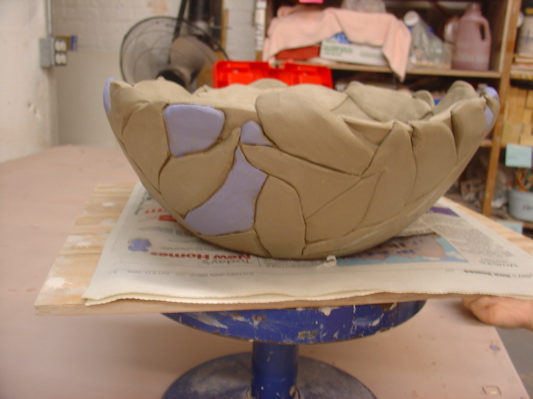
plus look at how great her slip painting turned out- this is blues and greens under Celadon.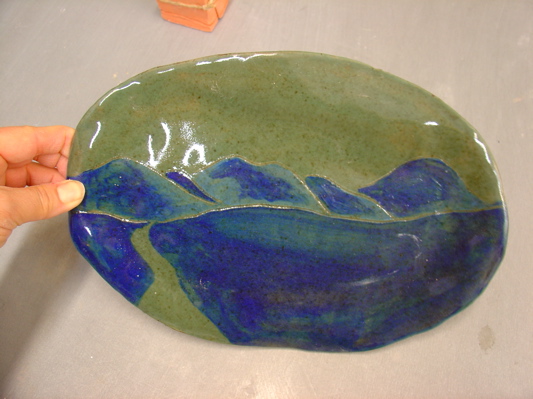
Leah is making an old man jug that has a great expression!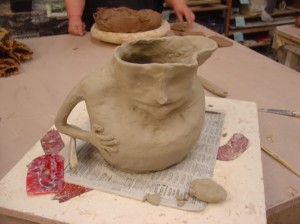
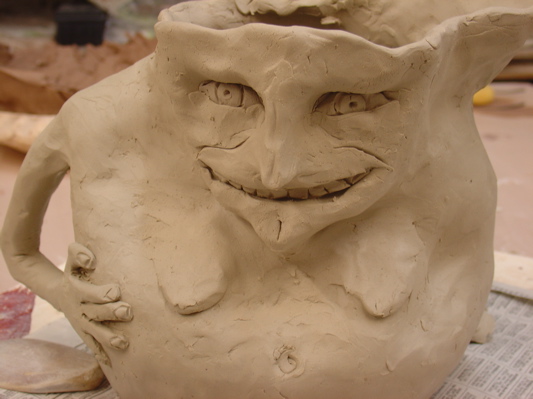 She toned down the paps later on.
She toned down the paps later on.
Transferred Slip Design
Another thing we tried this week was transferring slip.
I threw out a slab of stoneware and then covered it with white slip.
Then, using black slip, I painted a tree on a piece of newspaper and then pressed it onto the slab.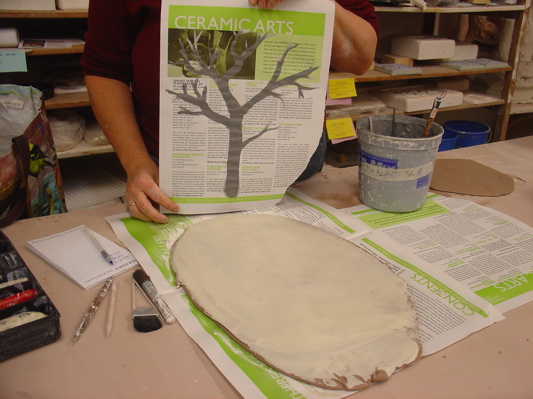
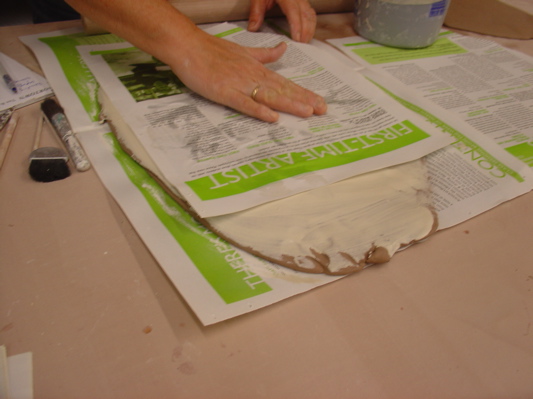
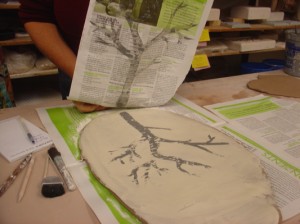 Not all the slip stuck but that gave it a cool texture and look.
Not all the slip stuck but that gave it a cool texture and look.
I plan to build a house like box with this slab. Remember my shadows of trees on buildings entry? (here)
For my last demo, I gave a quick lesson on sgraffitto since it is the main kind of work I do. I painted the surface with slip, drew an image on it and carved away all the negative space. You can see photos of this on my “How to make a Picture Vase” entry.
After class I taught a Terra Cotta Pavers workshop. They came out so great that I took pictures and thought I’d add that technique to this entry.
Inlaid colored clay
Start with two colors of clay; in this case I wanted to inlay high fire white into Terra cotta. I had students draw life size pictures and then lay thin coils of the white clay over their drawings. This even worked exceptionally well for a 4 year old & mom team.* note if you do words, lay them out in mirror writing or they will be backwards!
After you have your pattern laid out,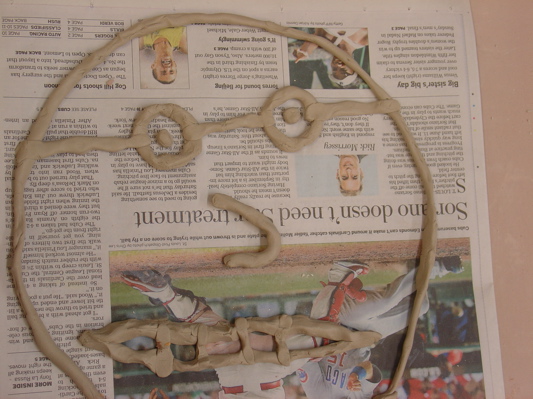 put a fairly thick pad of clay over the coils. These were extra thick as they are meant to be garden pavers (stepping stone type things). Once they are in place, pound the back evenly with your fist or the flat of your hand. You may also use a rolling pin.
put a fairly thick pad of clay over the coils. These were extra thick as they are meant to be garden pavers (stepping stone type things). Once they are in place, pound the back evenly with your fist or the flat of your hand. You may also use a rolling pin.
Then just flip them over!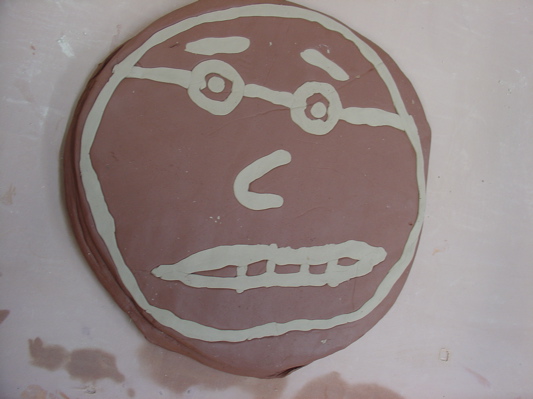 It’s hard to make a bad one!
It’s hard to make a bad one!
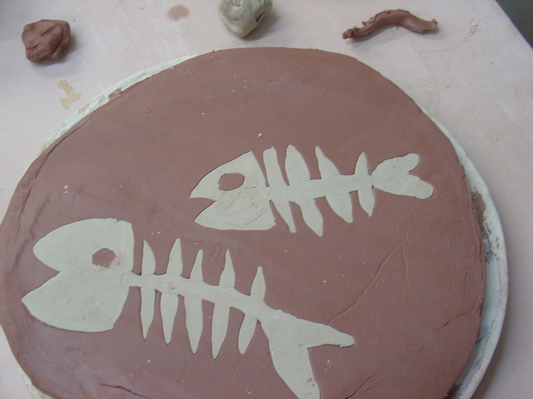
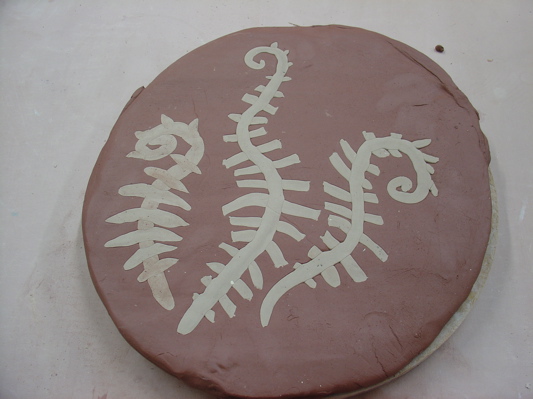
Lastly, I have added “after” photos to several entries as I’ve gotten the pieces back from the glaze kiln. Check out how Inlaid Slip turned out!
